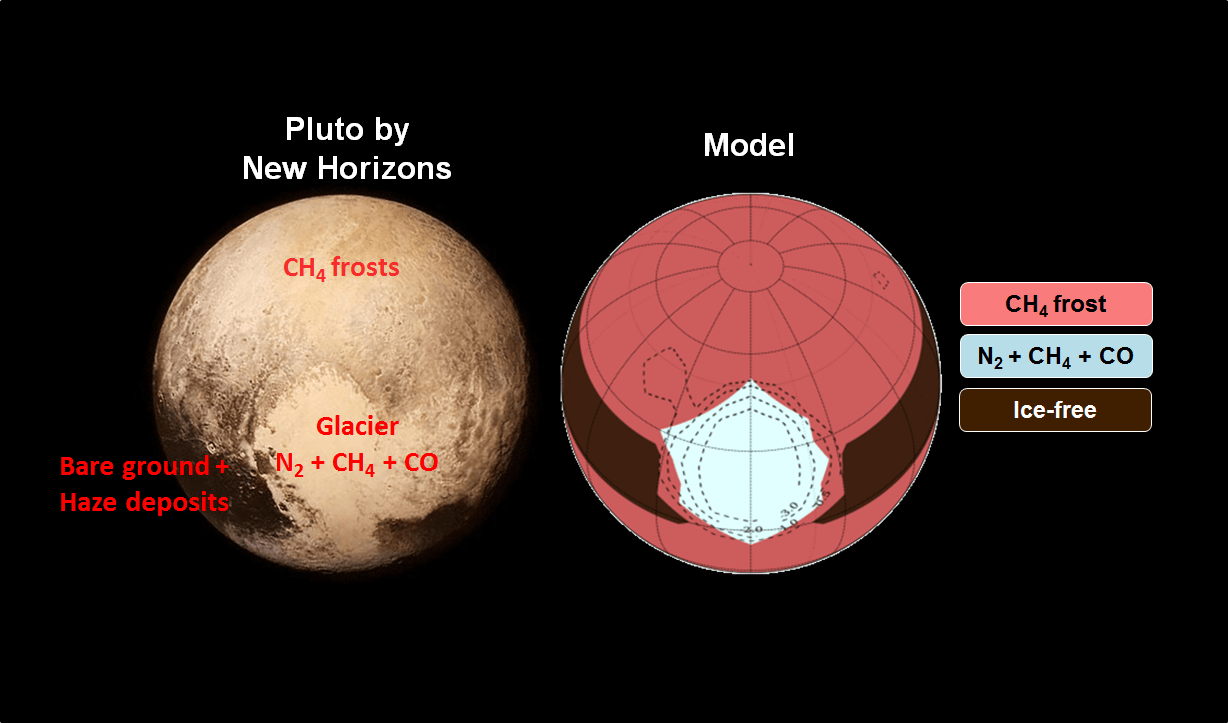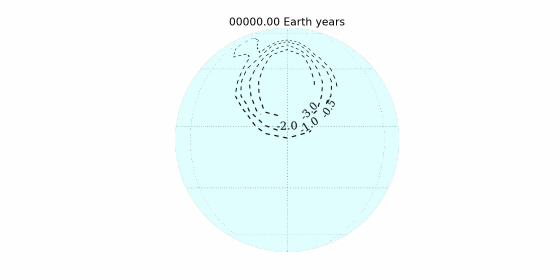Almost as soon as Pluto came into view, we saw it: A big heart splashed across half the dwarf planet’s surface, like something left it there on purpose for us to see. A year after we spotted it, we have an answer as to what put it there.
Image: NASA/APL/SwRI
We already knew what was in Pluto’s heart; it’s formed primarily by huge glaciers, and made mostly of nitrogen ice. But, where these materials came from remained a mystery. Now, a new paper out in Nature has an answer for us.
The researchers used data and observations collected during NASA’s New Horizons fly-by to build an environmental simulation that encompasses the last 50,000 years of Pluto’s history. Previously, researchers suspected that the size of glaciers at Pluto’s heart meant that there was a vast reservoir of nitrogen ice somewhere beneath Pluto’s surface. The new model shows no such deep ice reservoir existing, though. Instead, Pluto’s icy environment is shaped by deep basins on the surface, which have incredibly cold temperatures, and seasonally-shifting methane frosts.

Pluto observations compared to the Nature model (Image: Tanguy Bertrand)
“Our knowledge of what is on Pluto’s surface does not change, but we know now why it is here and not there,” Tanguy Bertrand, who is co-author of the paper and a PhD student at Paris’ Université Pierre et Marie Curie, told Gizmodo.
Their model stretches back over thousands of years in the past, but it also looks into the future to predict what will happen to Pluto’s ice next. The seasonal frosts, in particular, are supposed to slowly disappear. This doesn’t mean the heart is going to disappear, but we could see something even stranger — a heartbeat.

Pluto’s shifting nitrogen ice (Image: Tanguy Bertrand)
“The half heart glacier lying inside is a really massive glacier, which is not impacted by the seasonal changes. It probably formed when the basin formed, and will remain there in the future,” Bertrand said. “However, it probably flows and retracts over a few hundreds of kilometres (like a heart beating) with time, eroding and shaping the mountains surrounding it.”
By watching Pluto over decades to see if the model’s predictions come true, the researchers will either confirm the model or figure out ways to adjust it. It’s possible we’ll discover a more volatile world than we expected.

Pluto (Image: Tanguy Bertrand)
[Nature]
